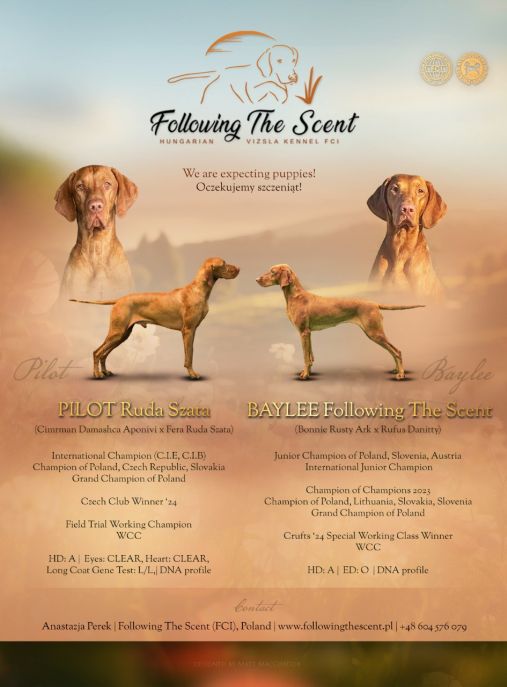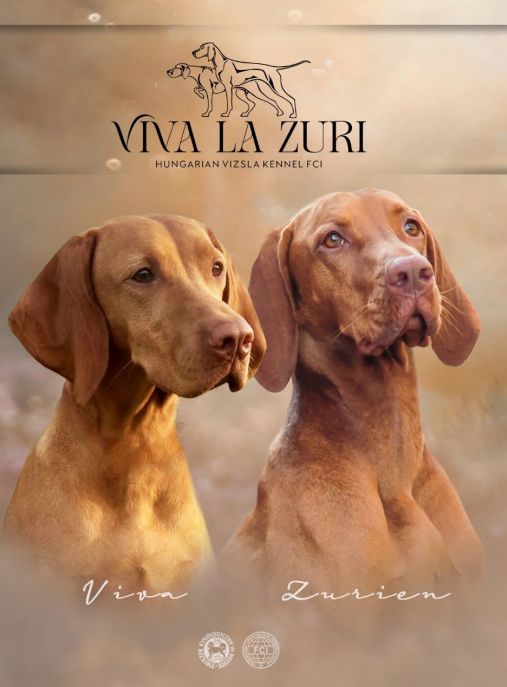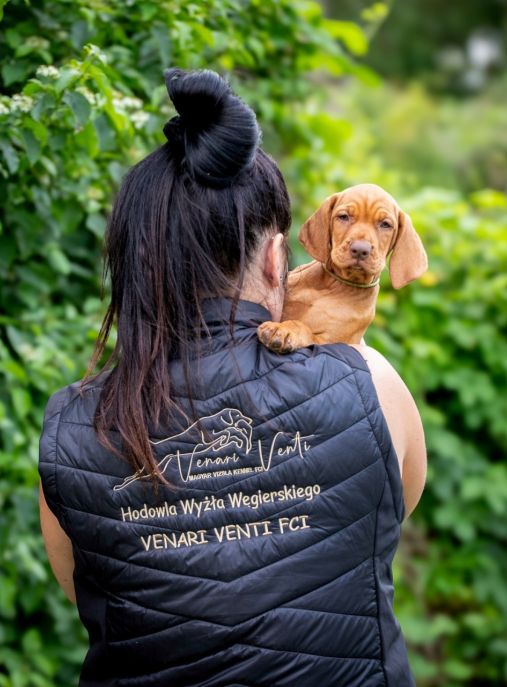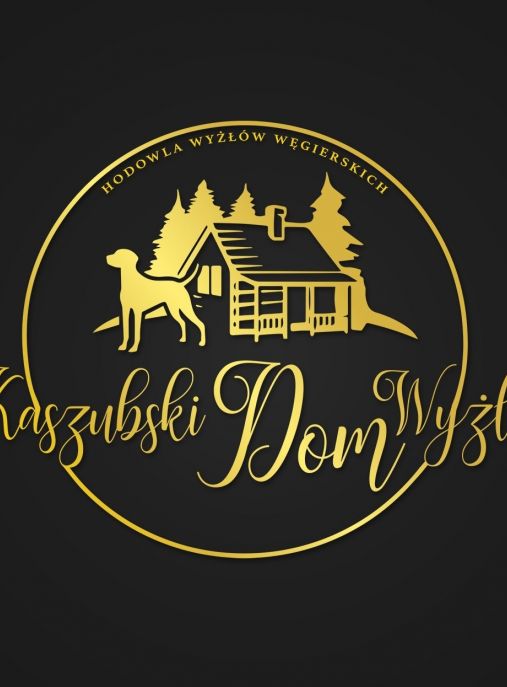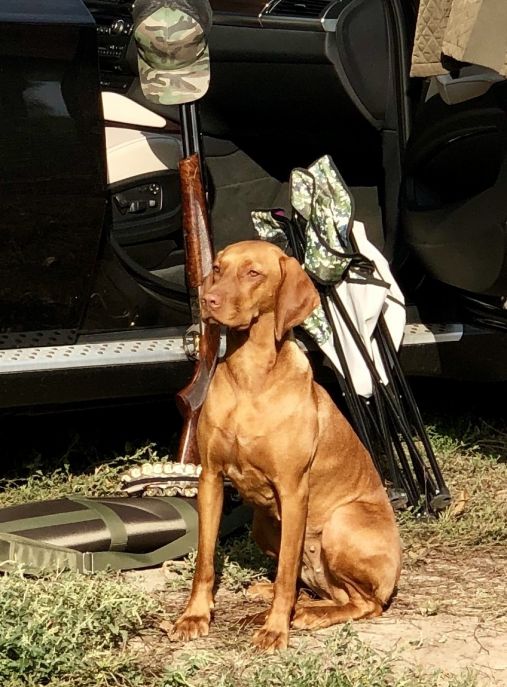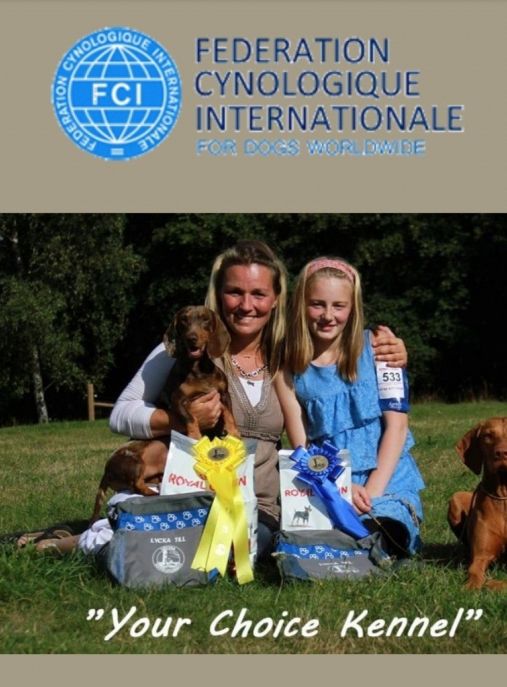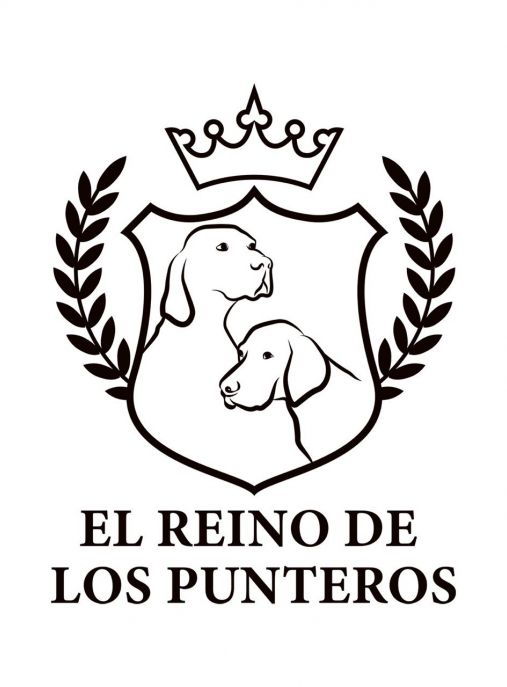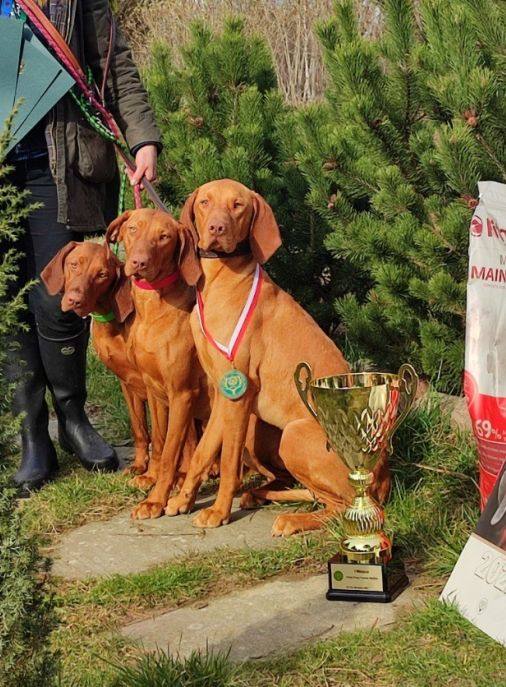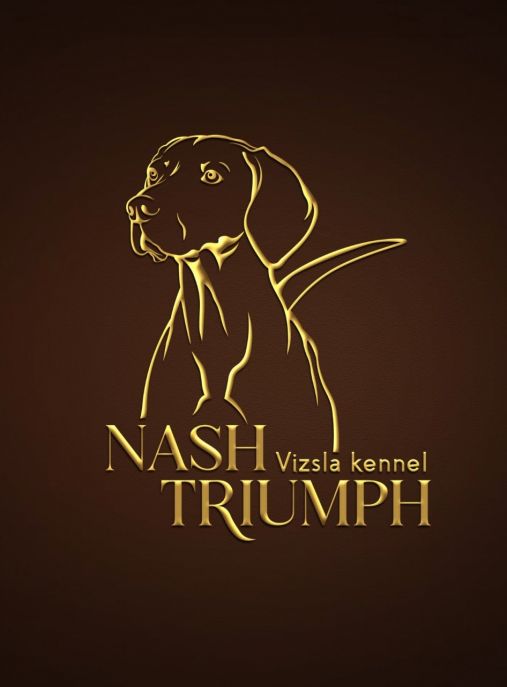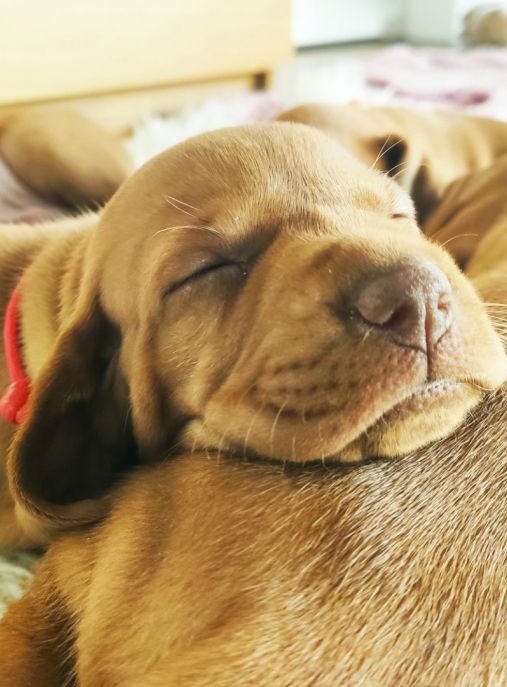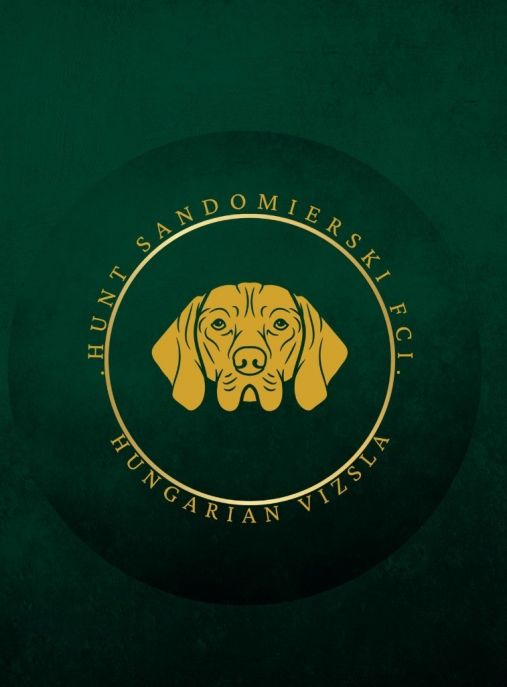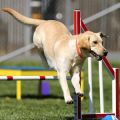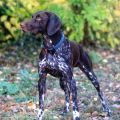The Hungarian Short-Haired Pointer, also known as the Vizsla, is a versatile and elegant breed of dog that hails from Hungary. With their striking appearance and exceptional hunting abilities, Vizslas have gained popularity not only as hunting companions but also as beloved family pets. This breed is characterized by its sleek, short coat, muscular build, and expressive eyes.
The history of the Vizsla dates back several centuries, with records of their existence tracing back to the 10th century. They were initially bred by Hungarian nobles for their exceptional hunting skills, particularly in falconry. The Vizsla's ancestors are believed to include various hunting dogs from Asia and Europe, such as the Turkish Yellow Dog and the Transylvanian Hound.
According to the FCI (Fédération Cynologique Internationale) typology, the Vizsla belongs to Group 7: Pointing Dogs. This group includes breeds that are primarily used for hunting and pointing out game to their human companions. The Vizsla is further classified under Section 1: Continental Pointing Dogs, which consists of breeds originating from Europe.
Vizslas are highly versatile dogs and excel in various roles. They are primarily known for their exceptional hunting abilities, particularly in pointing and retrieving game. Their keen sense of smell, agility, and endurance make them excellent hunting companions for both small and large game. Additionally, Vizslas have also proven themselves in other dog sports such as obedience, agility, and tracking.
In terms of appearance, the Vizsla is a medium-sized dog with a well-muscled and athletic build. Males typically stand between 22 to 24 inches (56 to 61 cm) at the shoulder, while females are slightly smaller, ranging from 21 to 23 inches (53 to 58 cm). The breed's weight ranges from 45 to 65 pounds (20 to 30 kg), with males generally being larger and heavier than females.
The Vizsla's coat is short, dense, and smooth, providing protection against various weather conditions. The color of their coat is typically a rich golden rust, giving them a distinctive and eye-catching appearance. Their ears are medium-sized and hang close to their head, while their eyes are expressive and often have a soulful look.
In terms of temperament, Vizslas are known for their friendly, affectionate, and gentle nature. They are highly intelligent and eager to please, making them relatively easy to train. Vizslas thrive on human companionship and are known to be excellent family dogs. They are generally good with children and other pets if properly socialized from a young age.
The average lifespan of a Vizsla is around 12 to 14 years, although some individuals have been known to live even longer with proper care and nutrition. Regular exercise is essential for this breed, as they have high energy levels and require mental and physical stimulation to prevent boredom and destructive behavior.
One interesting fact about Vizslas is their nickname, the "Velcro dog." This term refers to their tendency to stick close to their owners and constantly seek their attention and affection. Vizslas are known to be highly loyal and devoted to their families, often forming strong bonds with their human companions.
Another interesting characteristic of the Vizsla is their adaptability. While they excel in hunting and outdoor activities, they are also content to be indoor pets as long as they receive sufficient exercise and mental stimulation. However, it is important to note that Vizslas are not well-suited for apartment living due to their high energy levels and need for regular exercise.
In conclusion, the Hungarian Short-Haired Pointer, or Vizsla, is a versatile and elegant breed with a rich history and exceptional hunting abilities. They belong to Group 7: Pointing Dogs according to the FCI typology and are primarily used for hunting and pointing out game. With their friendly temperament, striking appearance, and high intelligence, Vizslas make excellent companions for active individuals or families who can provide them with the exercise, mental stimulation, and affection they require.

The Hungarian Short-Haired Pointer, also known as the Vizsla, is a remarkable breed of dog known for its exceptional character and versatile nature. With their striking appearance and friendly demeanor, Vizslas have become a popular choice for families and hunters alike. In this text, we will delve into the character of Vizslas, their behavior, and how to raise and train them.
One of the most prominent traits of the Vizsla is their affectionate and loving nature. They are incredibly loyal and thrive on human companionship, making them excellent family pets. Vizslas are known to form strong bonds with their owners and are always eager to please. Their gentle and sensitive temperament allows them to get along well with children and other pets, making them a great addition to any household.
These dogs are highly energetic and require regular exercise to keep them happy and healthy. Vizslas have an innate drive to be active and excel in various physical activities such as running, swimming, and playing fetch. Their athletic build and endurance make them excellent companions for outdoor enthusiasts and active families. Without proper exercise, Vizslas may become bored and exhibit destructive behavior.
Training a Vizsla requires patience, consistency, and positive reinforcement. These dogs are intelligent and eager to learn, making them highly trainable. However, they can be sensitive to harsh training methods or negative reinforcement, so it is crucial to use positive reinforcement techniques such as treats, praise, and rewards. Vizslas thrive on mental stimulation, so incorporating obedience training, agility exercises, and interactive games into their routine will keep them engaged and mentally stimulated.
Socialization is another vital aspect of raising a Vizsla. Early and ongoing socialization is necessary to ensure they grow up to be well-rounded and confident dogs. Exposing them to various environments, people, animals, and situations from a young age will help them develop into friendly and well-behaved companions. Vizslas can be prone to separation anxiety if not properly socialized, so gradually introducing them to alone time and crate training is essential.
Despite their friendly nature, Vizslas have a strong prey drive due to their hunting background. It is crucial to supervise them around small animals such as cats, rabbits, or rodents, as they may instinctively chase them. Early training and socialization can help mitigate this behavior, but it is essential to remember their instincts may still prevail in certain situations.
Vizslas are known for their excellent senses and make exceptional hunting dogs. They have a keen sense of smell, exceptional eyesight, and are highly trainable for various hunting tasks. Their versatility extends beyond hunting, as they excel in activities such as search and rescue, tracking, and even therapy work. Engaging them in activities that stimulate their natural instincts will keep them mentally and physically fulfilled.
In conclusion, the Hungarian Short-Haired Pointer, or Vizsla, is a breed with an exceptional character. Their affectionate and loyal nature, combined with their intelligence and athleticism, make them a fantastic choice for families and active individuals. With proper training, socialization, and exercise, Vizslas can become well-rounded companions that bring joy and happiness to their owners' lives.
The Hungarian Short-Haired Pointer, also known as Vizsla, is a versatile and energetic breed that requires specific care to ensure their well-being. Here are some tips on how to properly care for a Vizsla:
1. Exercise: Vizslas are highly active dogs that require plenty of exercise to stay happy and healthy. Aim for at least one hour of vigorous exercise daily, such as running, playing fetch, or participating in dog sports. Failing to provide enough exercise can lead to behavioral issues and restlessness.
2. Mental Stimulation: Alongside physical exercise, Vizslas need mental stimulation to prevent boredom. Engage them in activities like puzzle toys, obedience training, or scent work. This breed thrives when given a job to do, so consider activities that tap into their natural instincts, such as tracking or hunting.
3. Socialization: Vizslas are social dogs that thrive on human companionship. They can become anxious or develop separation anxiety if left alone for long periods. Ensure they have plenty of social interaction, both with their family and other dogs. Regular visits to dog parks or playdates with other well-behaved dogs can help fulfill their social needs.
4. Grooming: Vizslas have a short, dense coat that requires minimal grooming. Weekly brushing with a soft-bristle brush will help remove loose hair and keep their coat shiny. Bathing should be done only when necessary to avoid drying out their skin. Regularly check their ears for any signs of infection and trim their nails as needed.
5. Proper Diet: Provide a balanced and nutritious diet to support your Vizsla's active lifestyle. High-quality dog food that meets their specific needs is recommended. Consult with your veterinarian to determine the appropriate portion sizes and feeding schedule based on your dog's age, weight, and activity level. Avoid overfeeding, as Vizslas are prone to weight gain.
6. Health Care: Regular veterinary check-ups are essential to ensure your Vizsla remains in good health. Vaccinations, parasite prevention, and dental care should be part of their routine healthcare. Additionally, Vizslas are prone to certain health conditions like hip dysplasia, epilepsy, and allergies. Be aware of these potential issues and monitor your dog for any signs of discomfort or illness.
7. Training: Vizslas are intelligent and eager to please, making them highly trainable. Start training early, using positive reinforcement techniques such as treats, praise, and play. Consistency and patience are key, as this breed can be sensitive to harsh training methods. Enroll in obedience classes or seek professional help if needed.
What not to do:
1. Neglect exercise: Lack of exercise can lead to behavioral problems, anxiety, and obesity in Vizslas. Avoid confining them to a small space or leaving them alone for extended periods without exercise.
2. Isolation: Vizslas thrive on human companionship and can become anxious or develop separation anxiety if left alone for long periods. Avoid isolating them or neglecting their social needs.
3. Harsh training methods: Vizslas respond best to positive reinforcement training techniques. Avoid using harsh punishments or physical force, as it can damage their trust and hinder their training progress.
4. Overfeeding: Vizslas have a tendency to gain weight, which can lead to various health issues. Avoid overfeeding or giving excessive treats. Stick to a balanced diet and consult with your veterinarian for appropriate portion sizes.
5. Ignoring health issues: Regular veterinary check-ups are crucial to detect and address any health issues promptly. Ignoring signs of discomfort or illness can lead to more severe problems in the long run.
By following these tips, you can provide the best care for your Hungarian Short-Haired Pointer, ensuring they lead a happy, healthy, and fulfilling life.
The Hungarian Short-Haired Pointer, commonly known as the Vizsla, is a breed of dog that possesses a unique and captivating coat color. The color of the Vizsla's coat is often described as a rich, warm golden rust, resembling the hue of a freshly harvested wheat field bathed in the golden rays of the sun. This distinctive coloration is one of the defining characteristics of this breed, setting them apart from other dogs.
The Vizsla's coat is short, dense, and smooth, allowing the color to be showcased in all its glory. The golden rust color is evenly distributed throughout the entire body, from the tip of the nose to the end of the tail. It is a color that exudes warmth, radiance, and elegance, making the Vizsla a truly eye-catching breed.
When observing a Vizsla, one cannot help but be mesmerized by the depth and intensity of their coat color. The golden rust hue is not a flat or monotonous shade but rather a complex blend of various tones and shades. It is a color that seems to shimmer and glow, especially when the sunlight hits the coat, creating a breathtaking display of warmth and vibrancy.
The Vizsla's coat color is not only visually appealing but also serves a practical purpose. The golden rust hue allows these dogs to blend seamlessly into their natural surroundings, making them excellent hunting companions. Whether they are navigating through dense forests or open fields, their coat color provides them with a natural camouflage, allowing them to move stealthily and undetected.
In addition to their overall coat color, Vizslas may also have small patches of white on their chest or toes. These white markings, although minimal, add a touch of contrast to their coat, further enhancing their beauty and uniqueness.
It is important to note that the Vizsla's coat color may vary slightly among individuals. Some may have a slightly lighter or darker shade of golden rust, while others may exhibit a more reddish undertone. However, regardless of these slight variations, the overall color remains true to the breed's characteristic golden rust hue.
The color of the Hungarian Short-Haired Pointer, or Vizsla, is truly a sight to behold. It is a color that embodies warmth, radiance, and elegance, captivating all who have the pleasure of encountering these magnificent dogs. Whether in the field, at home, or in the show ring, the Vizsla's coat color is a testament to their beauty, grace, and unique place in the canine world.
The Hungarian Short-Haired Pointer, also known as the Vizsla, is a breed of dog known for its athleticism, intelligence, and friendly nature. When it comes to their health, Vizslas are generally considered to be a robust and healthy breed. However, like any other breed, they are prone to certain health conditions. In this text, we will explore the most common diseases found in Vizslas and discuss how to care for their overall health.
One of the most prevalent health issues in Vizslas is hip dysplasia. This condition occurs when the hip joint doesn't develop properly, leading to joint instability and eventually arthritis. Regular exercise, maintaining a healthy weight, and avoiding excessive jumping or rough play during the puppy stage can help reduce the risk of hip dysplasia. Additionally, responsible breeders often perform hip evaluations on their breeding dogs to minimize the occurrence of this condition.
Another common health concern in Vizslas is epilepsy. Epilepsy is a neurological disorder characterized by recurring seizures. While the exact cause of epilepsy in dogs is often unknown, it is believed to have a genetic component. If your Vizsla is diagnosed with epilepsy, your veterinarian may prescribe medication to manage and control the seizures. It is crucial to follow the prescribed treatment plan and regularly monitor your dog's condition.
Allergies are also relatively common in Vizslas. They can manifest as skin allergies, food allergies, or environmental allergies. Symptoms may include itching, redness, hair loss, and ear infections. Identifying and avoiding the allergen is essential in managing allergies. Your veterinarian may recommend dietary changes, hypoallergenic shampoos, or medications to alleviate the symptoms.
Vizslas are an active breed that requires regular exercise to maintain their physical and mental well-being. Daily walks, runs, or play sessions are necessary to keep them happy and healthy. Mental stimulation is equally important, as Vizslas are intelligent dogs that thrive on mental challenges. Puzzle toys, obedience training, and interactive games can help keep their minds sharp.
Proper nutrition is vital for the overall health of Vizslas. A balanced diet that meets their nutritional needs is essential. High-quality dog food, preferably formulated for active breeds, should be the foundation of their diet. Avoid overfeeding and monitor their weight to prevent obesity, which can lead to various health issues.
Regular veterinary check-ups are crucial for maintaining the health of Vizslas. Annual examinations, vaccinations, and preventive treatments for parasites, such as fleas and ticks, are essential. Your veterinarian may also recommend additional screenings or tests based on your dog's age and specific health concerns.
Grooming requirements for Vizslas are relatively low. They have a short, dense coat that requires minimal brushing to remove loose hair. However, regular ear cleaning, nail trimming, and dental care should not be overlooked. Checking their ears for signs of infection, keeping their nails trimmed, and brushing their teeth regularly can help prevent potential health problems.
In conclusion, while Hungarian Short-Haired Pointers (Vizslas) are generally healthy dogs, they are prone to certain health conditions such as hip dysplasia, epilepsy, and allergies. Providing regular exercise, a balanced diet, mental stimulation, and proper veterinary care are essential for maintaining their overall health and well-being. By being proactive in their care, Vizsla owners can help ensure their beloved companions lead long, happy, and healthy lives.
The Hungarian Short-Haired Pointer, also known as Vizsla, is a versatile and active breed that requires a well-balanced and nutritious diet to maintain optimal health and performance. Proper nutrition plays a vital role in their overall well-being, including their coat, muscle development, and energy levels. In this text, we will provide an extensive description of the nutrition requirements for Vizsla dogs, along with advice on feeding and what to avoid.
Protein is an essential component of a Vizsla's diet as it supports muscle development and repair. High-quality animal-based proteins should make up the majority of their diet. Look for dog foods that list real meat, such as chicken, turkey, or fish, as the first ingredient. Avoid foods that contain meat by-products or fillers, as these may not provide the necessary nutrients.
Fat is another crucial nutrient for Vizslas, as it provides them with a concentrated source of energy. Healthy fats, such as those found in fish oil or flaxseed, are beneficial for their skin and coat health. However, it's important to monitor their fat intake to prevent weight gain, as Vizslas can be prone to obesity. Consult with your veterinarian to determine the appropriate fat content for your dog's specific needs.
Carbohydrates are a source of energy for Vizslas, but they should be provided in moderation. Opt for complex carbohydrates like sweet potatoes, brown rice, or whole grains, which offer more nutritional value than simple carbohydrates. Avoid foods that contain excessive amounts of corn, wheat, or soy, as these ingredients can cause allergies or digestive issues in some dogs.
Fruits and vegetables are excellent additions to a Vizsla's diet, as they provide essential vitamins, minerals, and antioxidants. Blueberries, carrots, spinach, and pumpkin are all great options. However, be cautious with certain fruits like grapes or raisins, as they can be toxic to dogs. Always remove any seeds or pits from fruits before feeding them to your Vizsla.
Feeding frequency and portion control are crucial for maintaining a healthy weight in Vizslas. Most adult Vizslas thrive on two meals per day, while puppies may require more frequent feeding. Consult with your veterinarian to determine the appropriate portion sizes based on your dog's age, weight, and activity level. Avoid free-feeding or leaving food out all day, as this can lead to overeating and weight gain.
It's important to note that every dog is unique, and their nutritional needs may vary. Factors such as age, activity level, and any underlying health conditions should be considered when determining the best diet for your Vizsla. Regular visits to the veterinarian will help ensure that your dog's nutritional needs are being met and any adjustments can be made accordingly.
In conclusion, a well-balanced and nutritious diet is essential for the health and well-being of Hungarian Short-Haired Pointer (Vizsla) dogs. Providing high-quality proteins, healthy fats, complex carbohydrates, and a variety of fruits and vegetables will help support their overall health, energy levels, and coat condition. Remember to consult with your veterinarian for personalized advice and to avoid any foods that may be harmful to your Vizsla's health.
